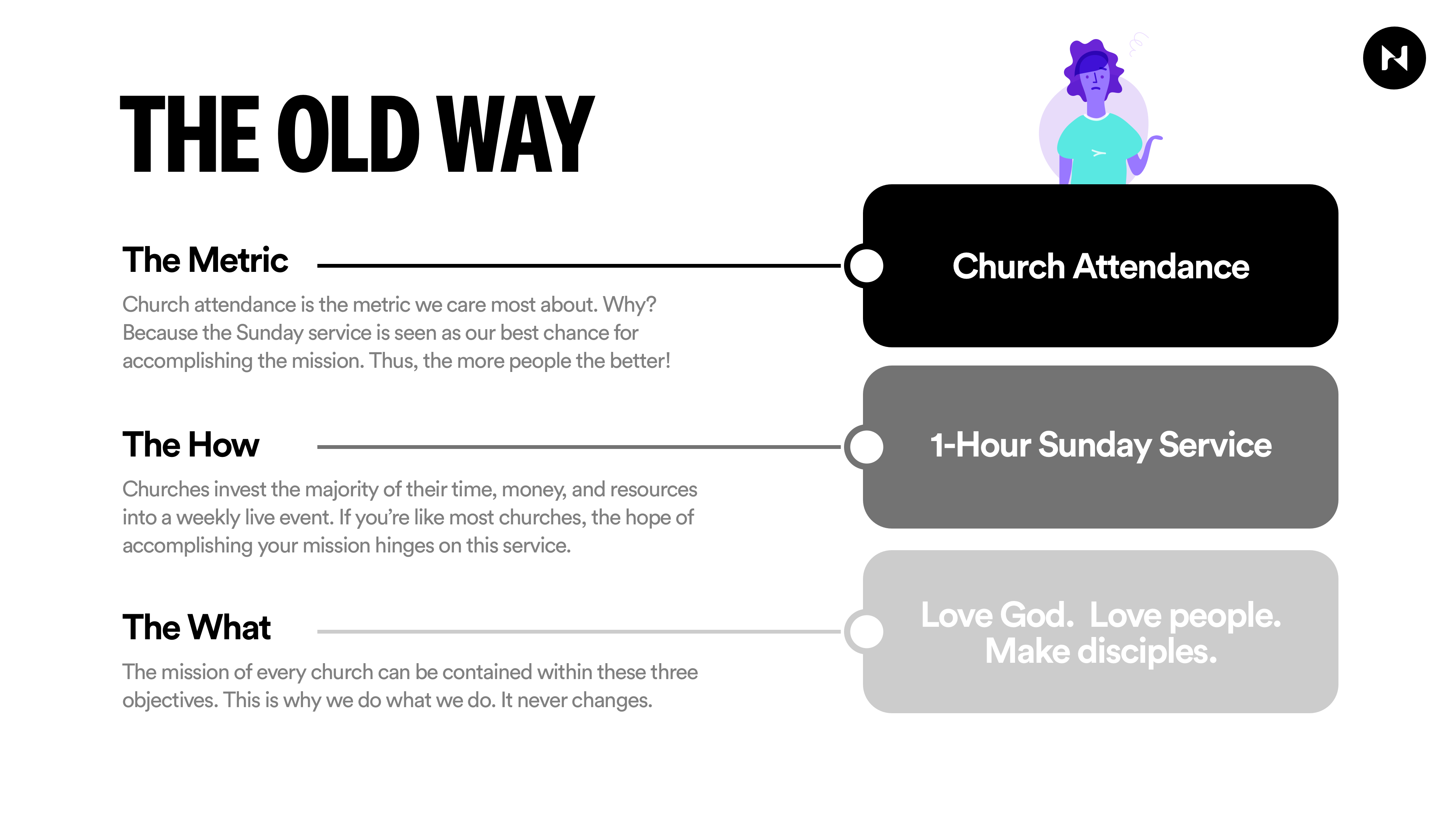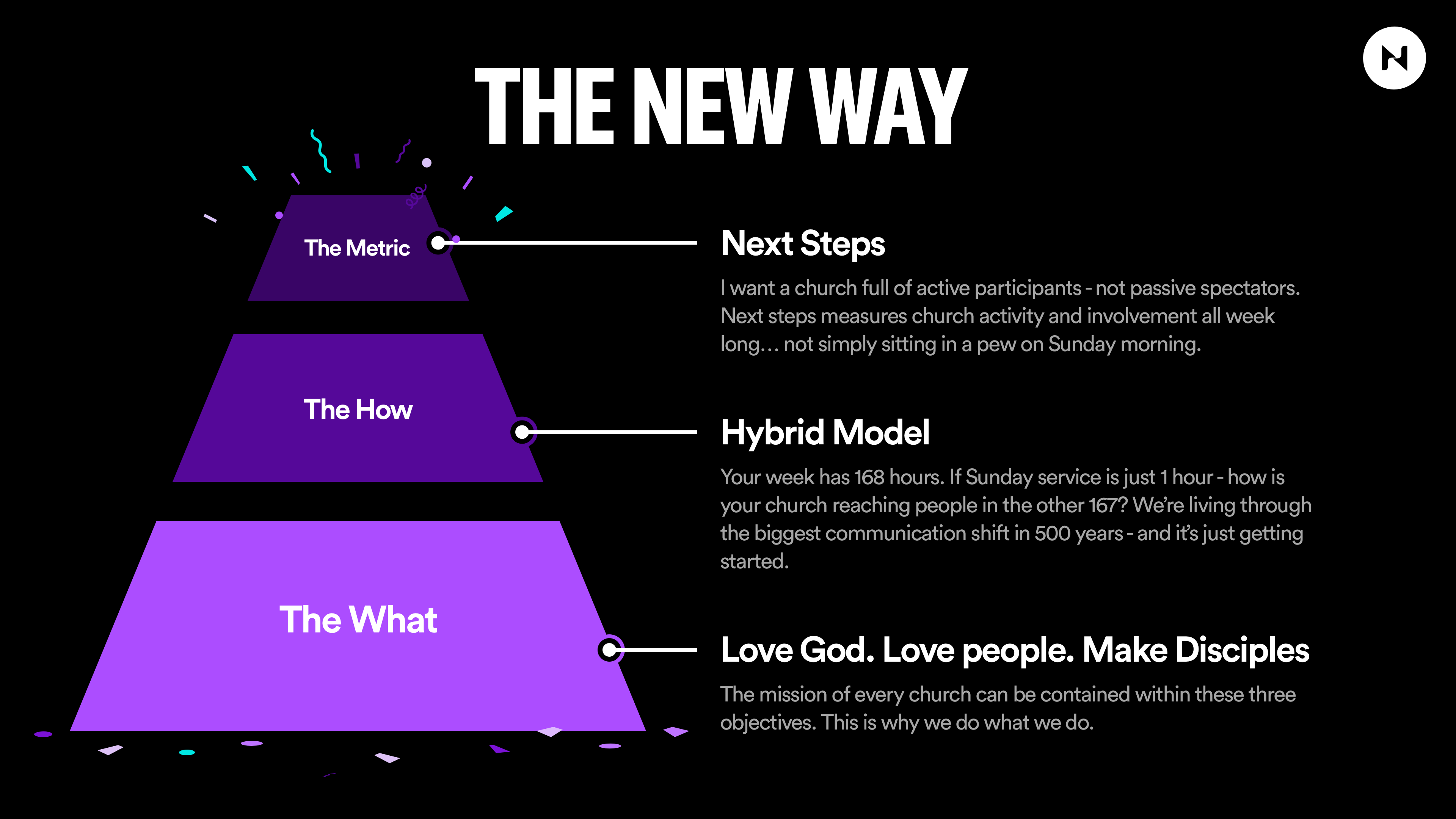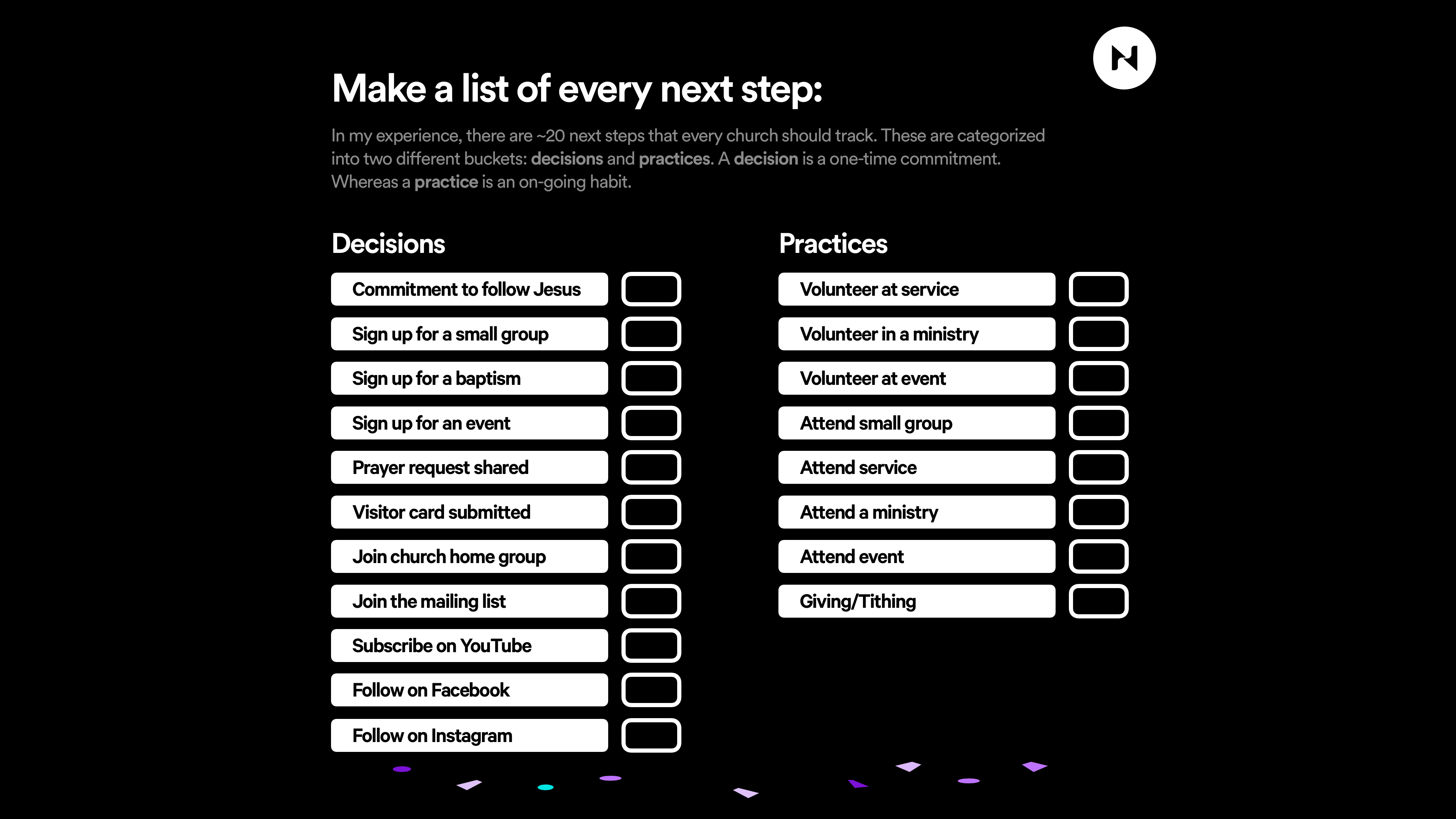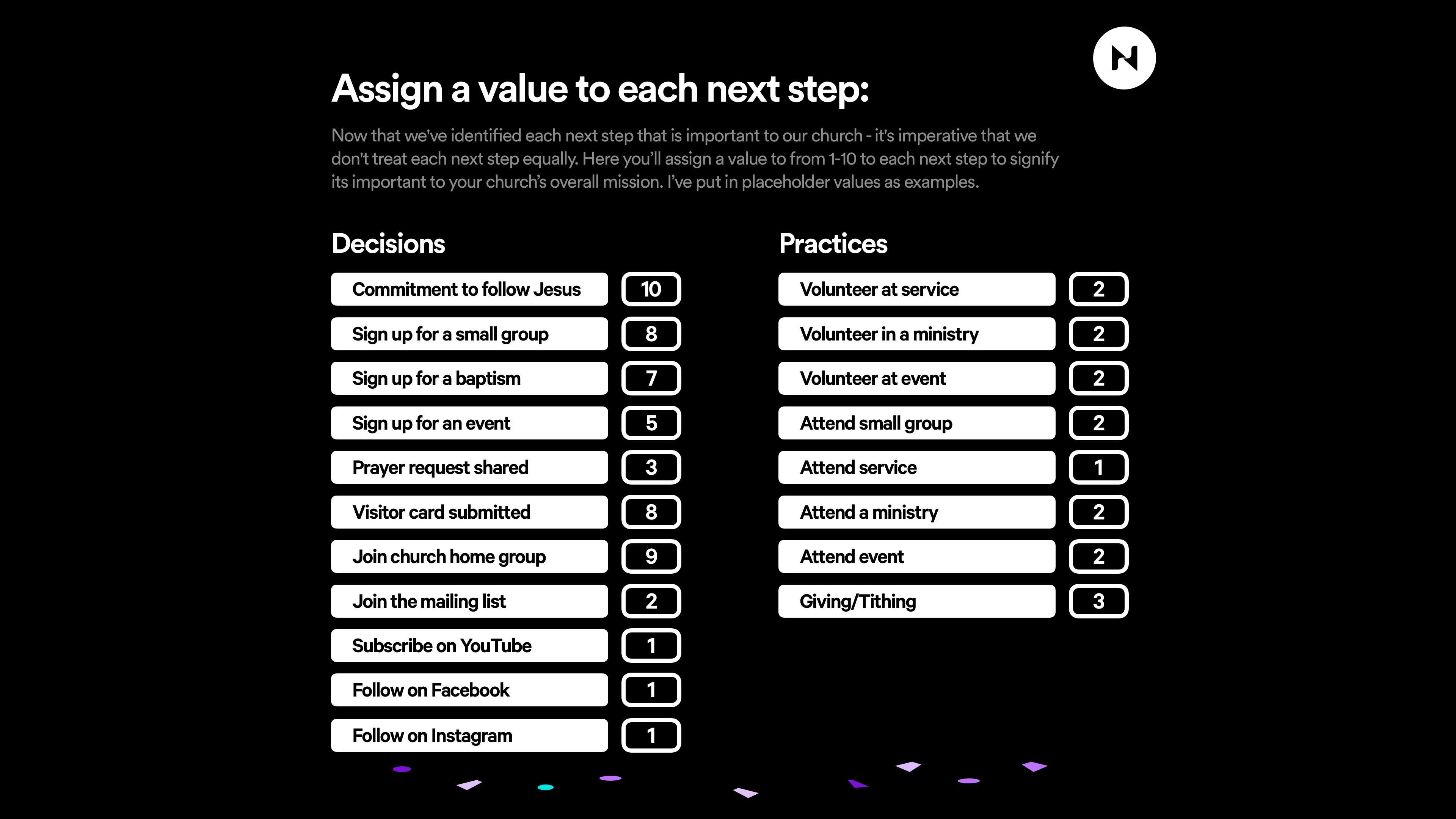If church growth is your goal – you’re in the right place.
This guide will help you do two things:
- Determine the best way to measure church growth
- Calculate your precise church growth score
Consider this:
You and I are living through the biggest communication shift in 500 years. And that shift is being accelerated by a global pandemic.
Now, more than ever, we need accurate ways to evaluate our churches.
Otherwise, we’re putting our churches in vulnerable spots. These are the new rules for church growth.
Let’s dive in.
Free Bonus: Click here to download The Church Growth Calculator Spreadsheet – start accurately tracking your church’s trajectory
The 7 rules of church growth
Below you’ll discover the seven rules of church growth – as I see them.
Because I don’t know about you, but I want to be effective in ministry. And as we begin to navigate the uncharted waters of ministry in a post-pandemic world – we need clarity.
The stakes are just too high.
So let’s not waste any time.
Rule #1: DO NOT overvalue church attendance
The first rule for measuring church growth begins with a question:
What is my church really trying to accomplish? Before we can calculate your church growth score – we first need to answer this question.
So don’t skip this part.
Here’s the bottom line…
Every Christ-following church exists to help people: love God, love others, and make disciples.
These are the three objectives of every church.
Where does this come from? Directly from Jesus.
Because it’s from The Great Commission1 and The Greatest Commandments2 that our churches find their purpose.
And sure, we may phrase it differently, but we all have the same target.
But here’s the problem…church attendance is a really, really bad way of evaluating this.
Here’s why…
Why church attendance is a problematic tool for measuring church growth
Consider this:
There are two ways of growing your church…
- Internal Growth: Your existing congregation grows in their ability to love God, love others, and make disciples
- External Growth: New people join your congregation and grow in their ability to love God, love others, and make disciples
Church attendance only cares about external growth though. Church attendance will only tell you if MORE people are attending your Sunday service this year compared to last year.
In no way can church attendance offer any insight into internal growth at your church.
Are the people already attending your church becoming more like Jesus? Church attendance can’t measure that.
We need a new tool for measurement.
We, as churches, exist to affect life change. But life change is difficult to quantify.
The result? For decades, we’ve used church attendance as a barometer for life change. Even though, at its best, attendance is an ancillary tool of measurement – one step removed from what we’re truly trying to accomplish.
Showing up for a service does not constitute life change.
Rule #2: DO use ‘next steps’ to measure church growth & health
What if I told you there was a more accurate way of measuring this existential mission of ours?
We call that next steps.
Let’s revisit the mission of our churches for a moment. We exist to help people:
- Love God
- Love others
- Make disciples
See how each of these statements begins with a verb? A verb demands action.
You can’t love God passively. You can’t love people passively. And you definitely can’t make disciples passively.
This is why everything you and I do in our churches boils down to just two words: next steps.
Because without next steps, all you have is a congregation of passive spectators. And I don’t know about you, but I want a church full of active participants – not spectators taking up space.
There’s a lot more we need to talk about to better understand this term ‘next steps’ – we’ll get to it a bit later though.
Rule #3: DO embrace a hybrid model of ministry
Remember when watching movies meant renting DVDs? Remember when taking photos required a camera?
It wasn’t that long ago.
You and I are living through the single biggest communication shift since the printing press – and it’s just getting started.
Prior to the pandemic, our churches were in a place of imbalance. Because for decades, we had over-indexed the 1-hour weekend service – to the neglect of the other 167 hours in a week.
However, in the middle of the pandemic, we are also in a place of imbalance – just the inverse. Because we are now forced to rely too heavily on digital outlets.
Going forward, if we wish to serve our churches holistically…offline ministry and online ministry will need to exist in parallel. Working in harmony. Understanding that neither can be a substitute for the other.
Let’s go a bit deeper here and compare what these two models of church growth.
The illustration below demonstrates how churches have traditionally measured growth:
- The What: Love God. Love people. Make disciples – The mission of every church can be contained within these three objectives. This is why we do what we do. This part never changes.
- The How: 1-Hour Sunday Service – Churches invest the majority of their time, money, and resources into a weekly live event. If you’re like most churches, the hope of accomplishing your mission hinges primarily on this service.
- The Metric: Church Attendance – The metric of church attendance is what we care about most. Why? Because the Sunday service is seen as our best chance for accomplishing the mission. Thus, the more people attending services the better!
Now…
Let’s use the model above as our foundation – because we’re not going to replace it. Instead, we’re going to build on it.
Here’s the new paradigm for measuring church growth:
- The What: Love God. Love people. Make disciples – The mission of every church can be contained within these three objectives. This is why we do what we do. This part never changes.
- The How: Hybrid Model – Your week has 168 hours. If Sunday service is just 1 hour – how is your church reaching people in the other 167? We’re living through the biggest communication shift in 500 years and it’s just getting started.
- The Metric: Next Steps – I want a church full of active participants – not passive spectators. Next steps measures church activity and involvement all week long…not simply sitting in a pew on Sunday morning.
Rule #4: DO write down every next step that is important to your church
So what actually *is* a next step?
Simply stated:
A ‘next step‘ is any action a person takes towards loving God, loving people, and making disciples.
And in my experience:
There are ~20 next steps that every church should be tracking as a baseline.
But what’s great about this framework for measuring church growth, is that you can customize it to add next steps that are uniquely important to your church.
So let’s run through each of these twenty next steps. In the graphic below, you’ll see I’ve categorized into one of two buckets:
- Bucket #1 – Decisions: The decisions bucket is for identifying the one-time moments when people commit to moving off the sidelines and into action – this is the event of moving someone from a position of passive spectator to active participant.
- Bucket #2 – Practices: The practices bucket is for tracking the on-going habits of a follower of Christ – think spiritual practice here.
As you can see, “Attend Service” is one of the next steps we want to track in the ‘Practices’ bucket. But, it’s not the only one. It’s just one of twenty total.
Of course, there’s still a big problem with this framework – because as it stands right now – each next step is valued equally.
So that’s what rule number five is for.
Rule #5: DO assign a number value from 1-10 to each next step based on importance
Now that we’ve identified each next step that is important to our church – it’s imperative that we don’t treat each next step equally.
The solution?
Assign a number value to each next step based on its importance to your church.
Rule #6: DO track each next step weekly and calculate your overall score
Calculating your church growth score is a simple 3-step process. I recommend you do it every month.
And in my experience, the best way to track your church growth score is using an automated spreadsheet. It makes things considerably easier.
Want to know the best part?
I’ve actually created a spreadsheet for this exact purpose and it’s completely free to download. I call it – The Church Growth Calculator Spreadsheet.
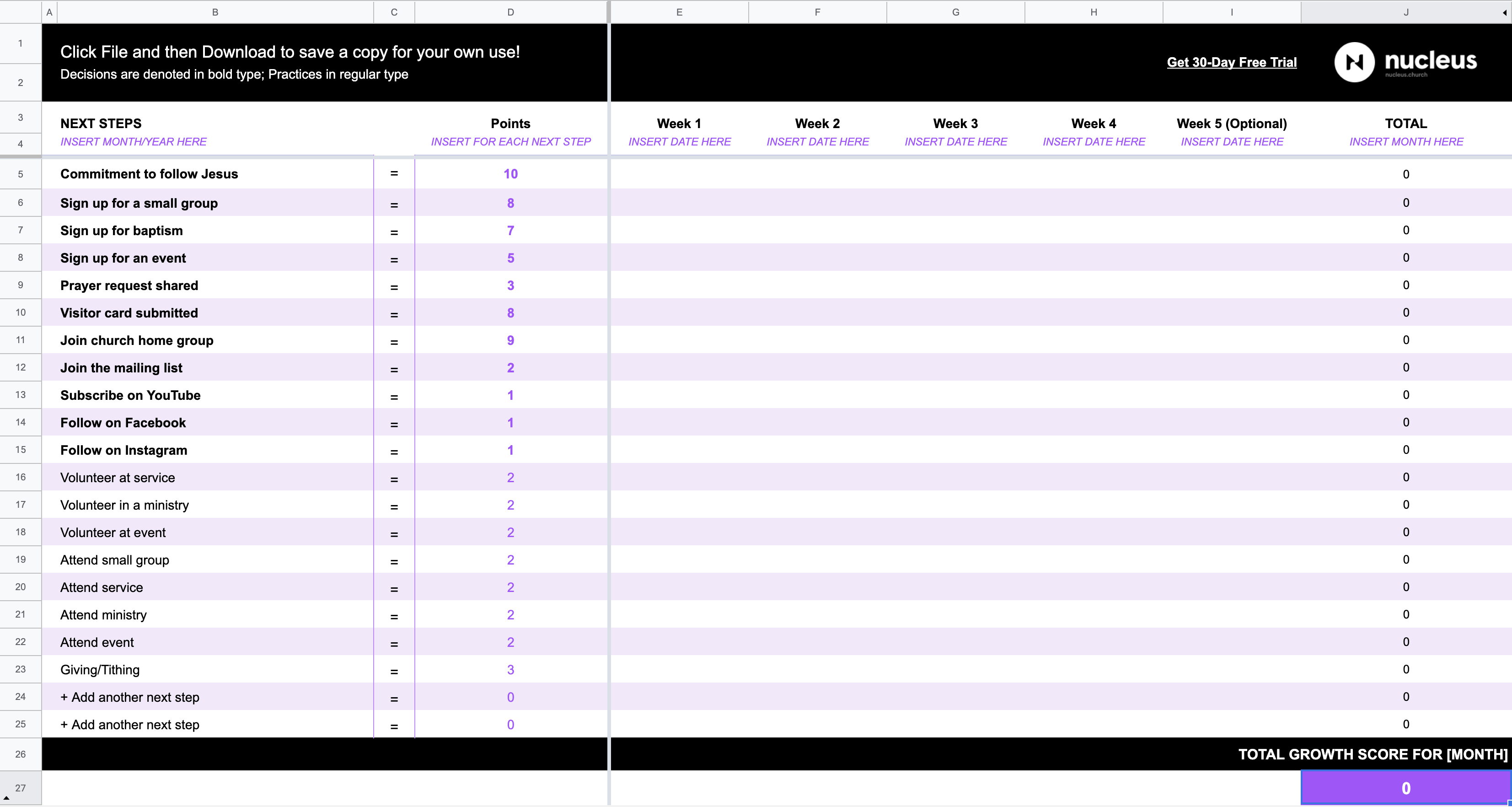
It even comes with a video tutorial that shows you how to use it and customize it for your church’s needs.
Just click below to download it.
Free Bonus: Click here to download The Church Growth Calculator Spreadsheet – start accurately tracking your church’s trajectory
Rule #7: DO use your next steps tracker to be more effective
None of this is about vanity metrics. We’re tracking real life change here.
Because the stakes are too high to just go through the motions or do things because we’ve always done them this way.
When you follow the 7 rules of church growth and track your next steps, you’ll begin to gain insight into what’s working and what’s not working at your church. You’ll get perspective on decisions leadership made that reflected in real life change that you can identify directly on the chart.
To use this framework most effectively, here are a few additional tips:
- Try to identify month-over-month trends: It’s normal for numbers to fluctuate on a weekly basis, but when you see a sharp incline/decline in a score, try to trace back what may have been done differently that week or month. Maybe you had an especially helpful campaign that drove more volunteer signups. Or maybe, despite your best efforts, people just didn’t respond to your announcements and social posts – so maybe it’s time to try something different.
- Set your baseline score in the first 60-90 days: You’ll first need a baseline number to make comparisons. Don’t compare yourself to the church down the road or the highly visible church online. Compare your church growth score in six months to what it is this month.
- Make data-driven decisions to be more effective: We serve in churches. So we may never have as much time, money, or creative energy as we need – this is why we need accurate tools for measurement. Use this calculator to evaluate your efforts. And if something you’re doing isn’t translating to demonstrable life change – cut it and try something else.
Summary
Here’s my promise to you:
If you commmit to this process for the next 12 months, you will come out of it a healthier church.
Plus, you’ll have contributed to more life change because of it. And that’s what this is all about.
Bottom line:
You and I are living through the biggest communication shift in 500 years.
And that was before a global pandemic hit.
Now, more than ever, we need accurate ways of evaluating our churches. Otherwise, we’re putting our churches in vulnerable spots.
To accurately and holistically measure church growth, we need to look beyond church attendance and our weekend services. Church is so much more than just a Sunday morning. The way we measure church growth should reflect that truth.
The best way to measure church growth? Next steps.
Use The Church Growth Calculator Spreadsheet to measure your church growth score. And then continually track your score month after month to see how your church is growing.
And if you wish to formalize this policy in your own church, click here to access a customizable template available to download.
If your score spikes or drops in a given month, use that data to pinpoint the cause of it. This will allow you to double-down on what’s working while moving on from what isn’t.
Here’s to greater church growth!
Free Bonus: Click here to download The Church Growth Calculator Spreadsheet – start accurately tracking your church’s trajectory
